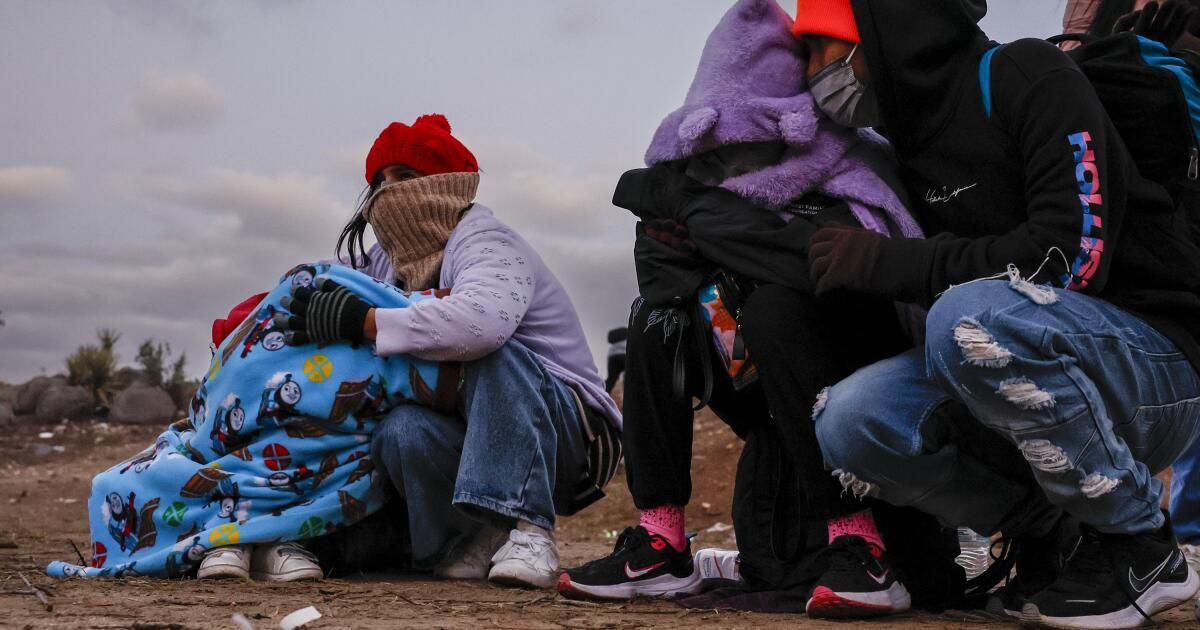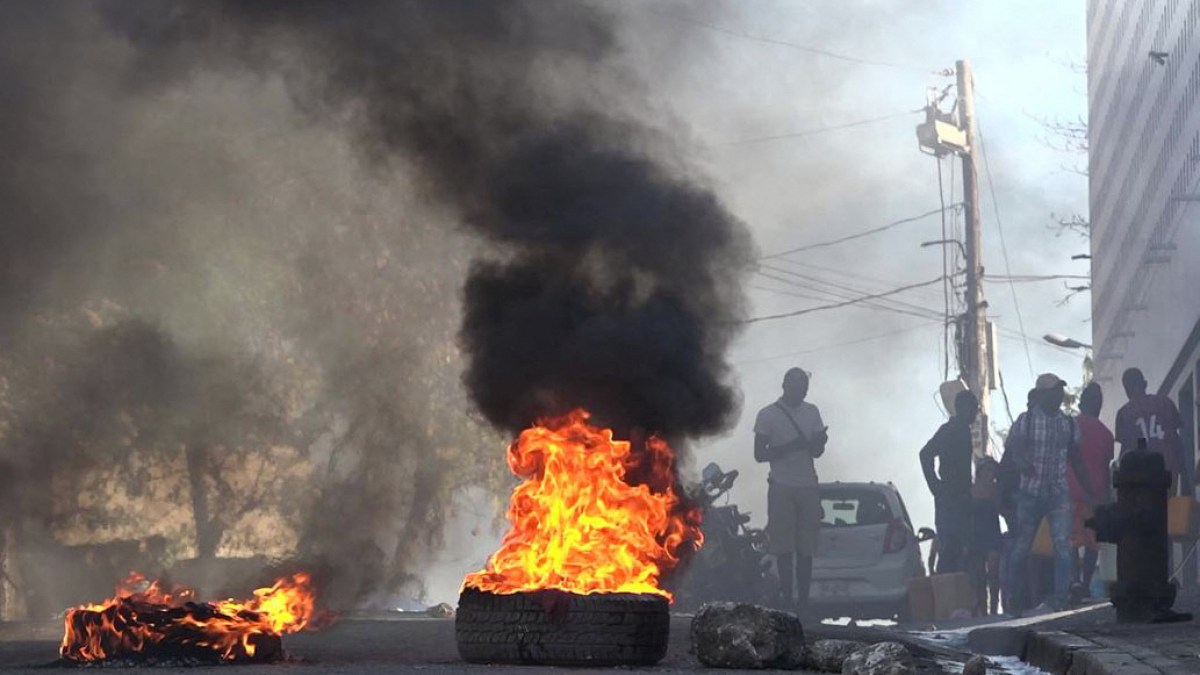A new pattern emerged last month along the country's southern border: Immigrant arrests plummeted at the Texas border in January compared to the same month a year earlier. At the same time, similar arrests increased year over year at entry points in California and Arizona.
Experts say a combination of factors are likely causing the shift, which has led to several thousand immigrants entering California each week as they await immigration court dates.
Intensified law enforcement efforts by the governments of Mexico, Panama and Colombia, and increased violence by cartels on the Mexican side of the Texas border have likely slowed expected migration to that state.
Texas Gov. Greg Abbott's new restrictive immigration policies, including the installation of razor wire along some parts of the border and a new state law that could take effect next month, could also be playing a role.
“For something to change so much so quickly, it's either word of mouth among immigrants or some change in smuggling patterns, or both,” said Adam Isacson, director of defense oversight at the Washington Office on Latin America. a research and advocacy organization.
He said some migrants and smugglers may already be changing their routes in anticipation of the Texas law, which would authorize local police to charge migrants with illegal entry and re-entry, punishable by six months in jail or up to 20 years in prison. prison, respectively. The American Civil Liberties Union and other advocacy groups have issued warnings for immigrants to avoid traveling to Texas.
“How is that [information] filter?” Isacson said. “Now everyone has phones and can change their destiny very quickly.”
California Gov. Gavin Newsom's office blamed Republicans for sabotaging attempts to advance border security.
“In the absence of political courage from the Republican Party, California has once again stepped up, making historic investments and serving as a model partnership for a secure and humane border,” spokeswoman Erin Mellon wrote in a statement.
Texas' anti-immigration policies have put it at odds with the Biden administration.
Last month, Texas lost a fight against the administration over the use of razor wire along the border. By a 5-4 vote, the Supreme Court said Border Patrol agents can remove razor wire installed by Texas authorities that prevented federal agents from monitoring areas along the Rio Grande.
A federal judge in Austin will decide whether the new Texas law that makes illegal border crossings a state crime can take effect on March 5.
Migration patterns along the border vary month to month due to seasonal changes, including weather. But even after accounting for those normal fluctuations, last month's arrest numbers stood out.
According to the latest Border Patrol figures, the El Paso and Del Rio, Texas, regions each had fewer than 18,000 arrests in January. That's almost half the figure for the same month last year.
Meanwhile, immigrants trying to enter the country illegally in the San Diego region were arrested nearly 25,000 times in January, a 60% increase from the same month last year, Border Patrol figures show.
Arizona saw an even larger increase. Tucson had more than 50,000 arrests, up from 20,000 last year, according to the Border Patrol.
The Mexican government's stepped-up enforcement is a factor in the decline along the Texas border, said Ariel Ruiz Soto, a policy analyst at the independent Migration Policy Institute. Enforcement within Mexico as far south as the city of Tapachula, which borders Guatemala, has disrupted migratory routes along the way to Texas, while having less effect on those bound for Arizona and California. .
Migrants of similar nationalities tend to head towards certain regions of the border. A senior U.S. Customs and Border Protection official said arrests of migrant families from Guatemala, Honduras and El Salvador, who tend to show up at the Texas border, generally decline in the first months of the year.
Arrests in Arizona and California have increased steadily since last summer, the official said. San Diego sees a more diverse population of immigrants arriving, including those from as far away as China, Turkey and Guinea, and is less affected by seasonality, as people from certain countries can purchase plane tickets directly to Tijuana, one of the largest cities along the Mexican coast. edge.
After increasing through January, weekly Border Patrol figures showed 8,659 arrests near San Diego for the week ending February 6 and a decrease to 7,531 by February 20.
Customs and Border Protection data shows a 75% drop in arrests of Venezuelans from December to January. Ruiz Soto said that this is because the governments of Panama and Colombia have intensified surveillance of the Darién Gap, the dangerous jungle route between those two countries through which many migrants pass on their way to the United States.
Smuggling patterns, which were somewhat consistent for many years, have changed every few months since 2021, Isacson said. He pointed to cartel infighting in the Mexican state of Tamaulipas, which borders Texas' Rio Grande Valley, and the rise in migrant kidnappings.
San Diego has not been one of the regions with the highest immigration arrests for decades, Isacson said.
Citing increased migrant arrivals, CBP officials temporarily closed the San Ysidro west pedestrian crossing in December and redirected agents to help Border Patrol officers detain migrants.
The border protection agency official said they screen nearly 1,000 people daily through an expedited removal process. But the agency lacks enough asylum officials to expand those reviews, so many more immigrants are placed in traditional deportation proceedings and released pending a final order from a judge, which could take years due to the backlog of millions. of cases.
One result of the surge in arrivals to California was the early closure Thursday of the San Diego Migrant Welcome Center, operated by the nonprofit SBCS, formerly South Bay Community Services.
The Customs and Border Protection official said that highlights the need for more funding. Organizations in the area, including Catholic Charities and Jewish Family Services, have not received additional federal money this fiscal year through FEMA's shelter and services program.
A bipartisan bill blocked by Senate Republicans earlier this month would have funded sweeping immigration reforms aimed at addressing unprecedented arrivals at the southern border. Following the bill's failure, U.S. Immigration and Customs Enforcement warned it could resort to releasing thousands of detained immigrants as it seeks to address a $700 million budget shortfall.
Sen. Alex Padilla (D-Calif.) introduced an amendment to the failed homeland security bill to include $5 billion in FEMA funding for migrant shelter and services. He told The Times that he will continue working to increase such funding.
“The federal government must increase its support for community organizations that provide important humanitarian assistance to migrants in California and along our southwest border,” he said in a statement.
When asked about the immigration shift, Rep. Darrell Issa (R-Bonsall) blamed the Biden administration. His district includes Jacumba Hot Springs, where hundreds of migrants have been held in open-air camps.
“Biden has surrendered our sovereignty and is allowing foreign governments, many of them hostile to our national interest, to decide who can cross our borders, violate our laws, and remain in our country,” she said in a statement.
The San Diego welcome center, which opened in October, offered immigrants Wi-Fi, food and help coordinating transportation and shelter. It served some 81,000 immigrants.
The center operated with $6 million in federal COVID-19-era American Rescue Plan funds allocated through San Diego County. The money was projected to last until March. The county Board of Supervisors is working to develop a long-term plan for migrant transfer sites and respite shelters.
“As the number of immigrants arriving at the center has increased significantly in recent weeks, our finite resources have been stretched to the limit,” SBCS President and CEO Kathie Lembo said in a statement.
The Customs and Border Protection official said the agency has moved some staff to California since last year, although not in recent weeks. The agency is concerned about the decrease in humanitarian support with the closure of the welcome center and the impact it could have on California border communities, the official said.
Nonprofits offering services to migrants at the center, including legal services provider Al Otro Lado, were left struggling to fill the gap as migrant arrivals continued. Border Patrol buses dropped off about 350 migrants at a transit station on Friday, the organization said.












